DAT Quantitative Reasoning Math FREE Sample Practice Questions
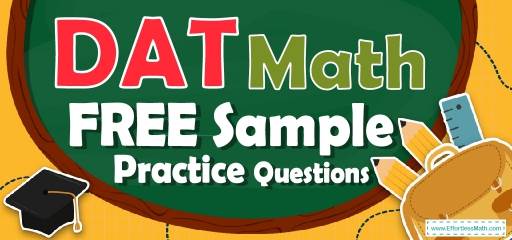
B. \(57 \space π \space in^2\)
C. \(66 \space π \space in^2\)
D. \(288 \space π \space in^2\)
E. \(400 \space π \space in^2\)
5- A chemical solution contains \(4\%\) alcohol. If there is 24 ml of alcohol, what is the volume of the solution?
A. 240 ml
B. 480 ml
C. 600 ml
D. 1200 ml
E. 2400 ml
6- Which of the following points lies on the line \(2x + 4y = 10\)?
A. \((2, 1)\)
B. \((–1, 3)\)
C. \((–2, 2)\)
D. \((2, 2)\)
E. \((2, 8)\)
7- In the following figure, ABCD is a rectangle, and E and F are points on AD and DC, respectively. The area of \(∆\)BED is 16, and the area of \(∆\)BDF is 18. What is the perimeter of the rectangle?
A. 20
B. 22
C. 32
D. 40
E. 44
8- What is the solution of the following inequality?
\(|x-10|≤3\)
A. \( x≥13 ∪ x≤7\)
B.\( 7≤x≤13\)
C. \( x≥13 \)
D. \( x≤7\)
E. Set of real numbers
9- A bag contains 18 balls: two green, five black, eight blue, a brown, a red, and one white. If 17 balls are removed from the bag at random, what is the probability that a brown ball has been removed?
A. \(\frac{1}{9}\)
B. \(\frac{1}{6}\)
C. \(\frac{16}{17}\)
D. \(\frac{17}{18}\)
E. \(\frac{1}{2}\)
10- If a tree casts a 24–foot shadow at the same time that a 3 feet yardstick casts a 2–foot shadow, what is the height of the tree?
A. 24 ft
B. 28 ft
C. 36 ft
D. 48 ft
E. 52 ft
Best DAT Quantitative Reasoning Math Prep Resource for 2026
Answers:
1- A
\(One \space liter=1000 cm^3→ 6 liters=6000 cm$3\)
\(6000=15×5×h→h=\frac{6000}{75}=80 cm\)
2- B
\(\frac{2}{3}×90=60\)
3- C
I. \(|a|<1→-10→-ba^2>a\) (plug in\( -1/2\), and check!) (It’s false)
III. \(-1<a<1\),multiply all sides by 2,then: \(-2<2a<2\)
Subtract 3 from all sides. Then:
\(-2-3<2a-3<2-3→-5<2a-3<-1 (It \space is \space true!)\)
4- C
Surface Area of a cylinder \(= 2πr (r + h)\),
The radius of the cylinder is \(3 (6 ÷ 2)\) inches and its height is 8 inches. Therefore,
Surface Area of a cylinder \(= 2π (3) (3 + 8) = 66 π\)
5- C
\(4\%\) of the volume of the solution is alcohol. Let \(x\) be the volume of the solution.
Then: \(4\%\) of \(x = 24\) ml ⇒ \(0.04 x = 24 ⇒ x = 24 ÷ 0.04 = 600\)
6- B
Plug in each pair of numbers in the equation:
A. \((2, 1): 2 (2) + 4 (1) = 8\) Nope!
B. \((–1, 3): 2 (–1) + 4 (3) = 10\) Bingo!
C. \((–2, 2): 2 (–2) + 4 (2) = 4\) Nope!
D. \((2, 2): 2 (2) + 4 (2) = 12\) Nope!
E. \((2, 8): 2 (2) + 4 (8) = 36\) Nope!
7- D
The area of \(∆\)BED is 16, then:
\(\frac{4×AB}{2}=16→4×\)AB\(=32\)→AB\(=8\)
The area of \(∆\)BDF is 18, then:
\(\frac{3×BC}{2} =18→3×\)BC\(=36\)→BC\(=12\)
The perimeter of the rectangle is \(= 2×(8+12)=40\)
8- B
\(|x-10|≤3→-3≤x-10≤3→-3+10≤x-10+10≤3+10→7≤x≤13\)
9- D
If 17 balls are removed from the bag at random, there will be one ball in the bag. The probability of choosing a brown ball is 1 out of 18. Therefore, the probability of not choosing a brown ball is 17 out of 18 and the probability of having not a brown ball after removing 17 balls is the same.
10- C
Write a proportion and solve for \(x\).
\(\frac{3}{2}=\frac{x}{24} ⇒ 2x=3 ×24 ⇒ x=36\) ft
The Best Books to Ace the DAT Quantitative Reasoning Math Test
Related to This Article
More math articles
- Exploring the World of Geometry: The Intricacies of Similarity
- How to Find Function Values from the Calculator
- 10 Most Common 6th Grade MAP Math Questions
- GED Calculator
- How to Decompose Fractions?
- The Application of The Squeeze Theorem: Limit Problems Made Easy
- HiSET Math FREE Sample Practice Questions
- How to Factor the Difference between Two Perfect Squares?
- How to Find Variable and Fixed Expenses
- Top 10 Tips to Overcome ISEE Math Anxiety

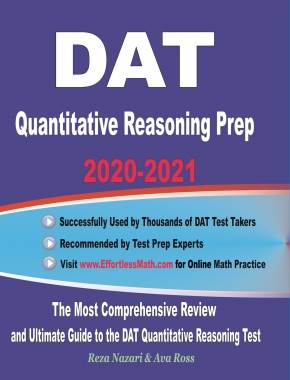
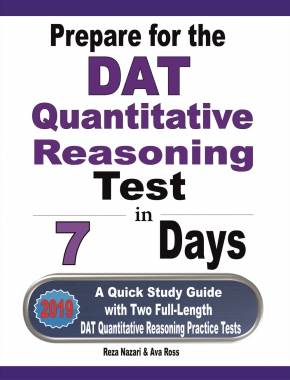
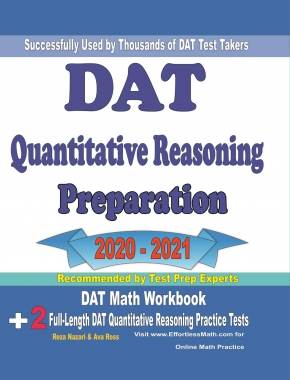
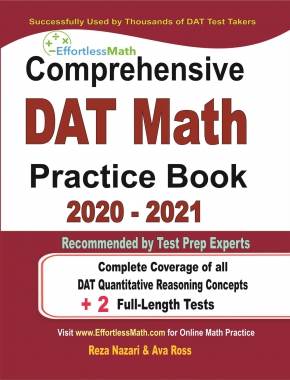
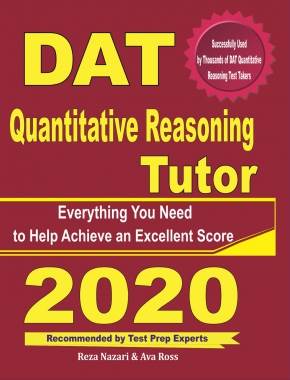
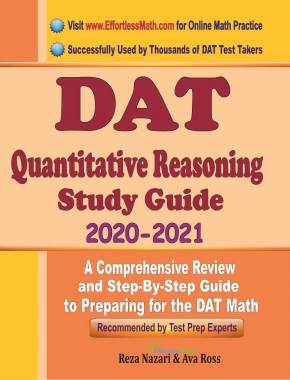
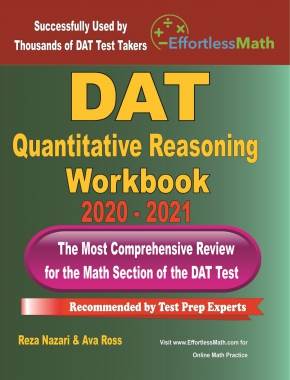
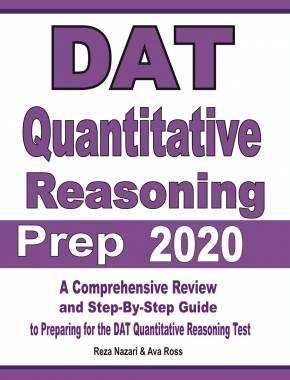
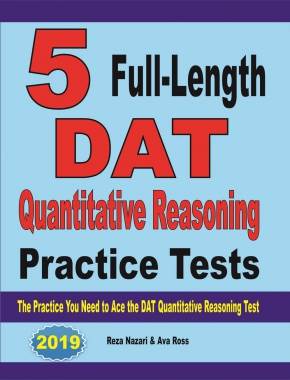
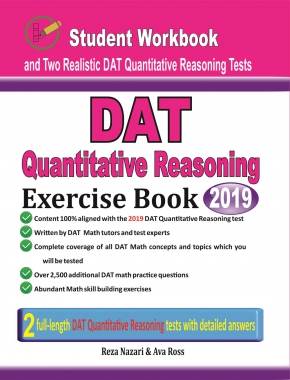
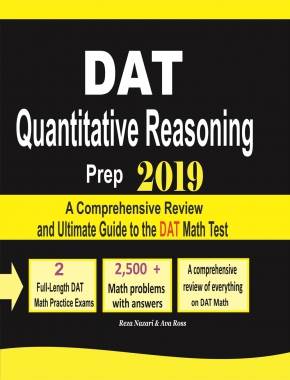
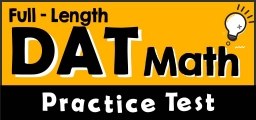
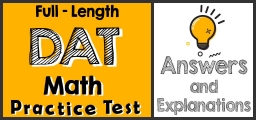
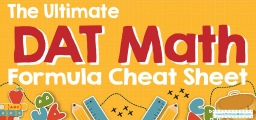

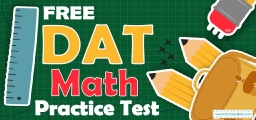
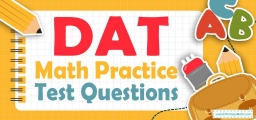

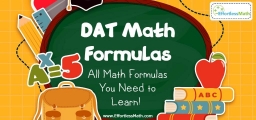
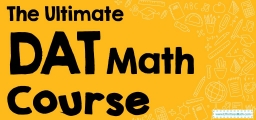
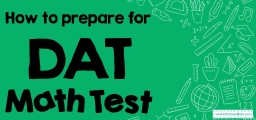
What people say about "DAT Quantitative Reasoning Math FREE Sample Practice Questions - Effortless Math: We Help Students Learn to LOVE Mathematics"?
No one replied yet.